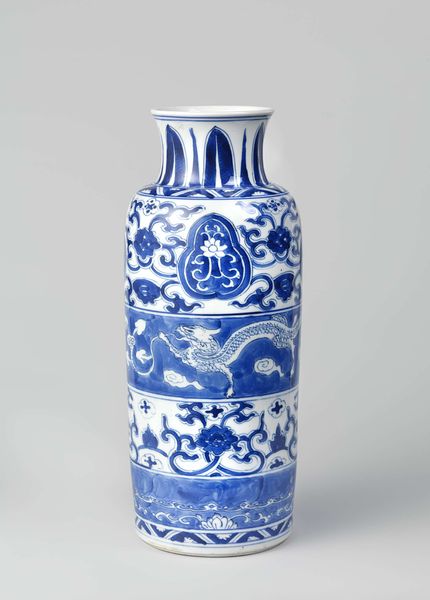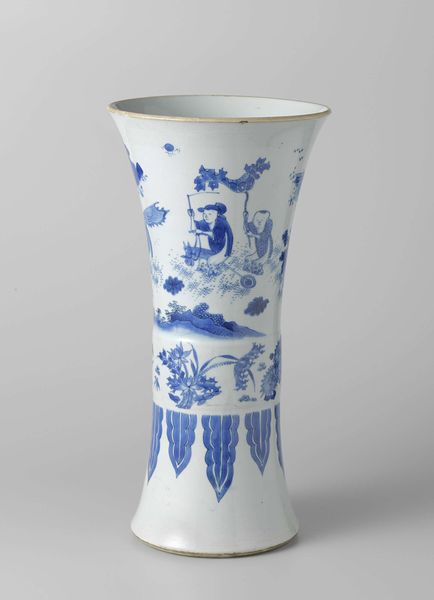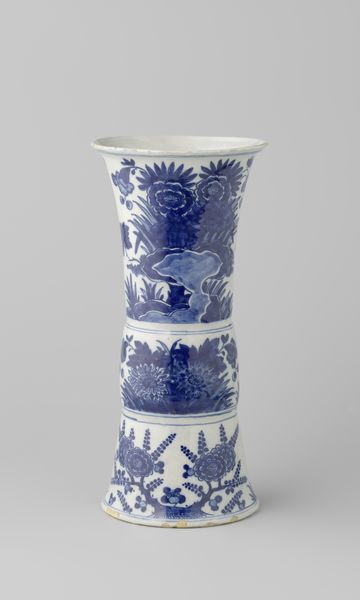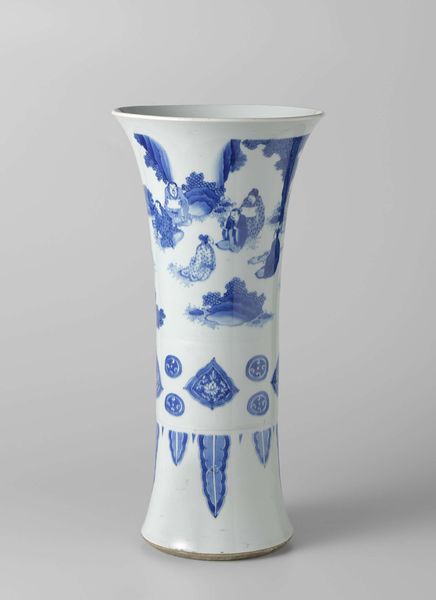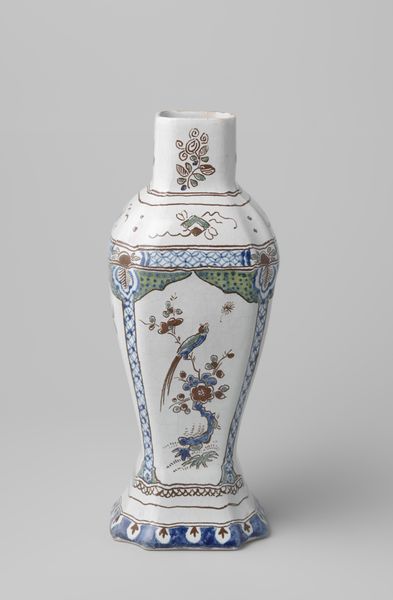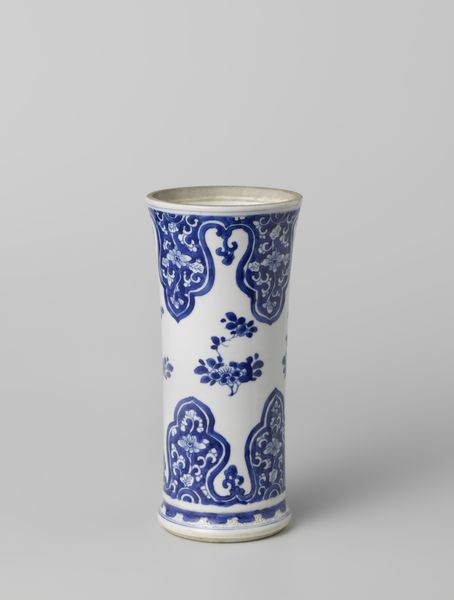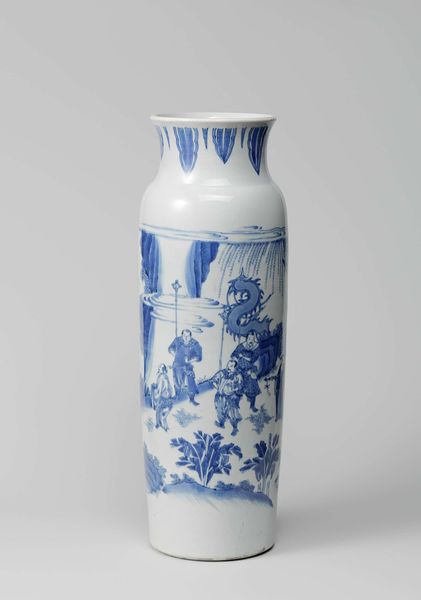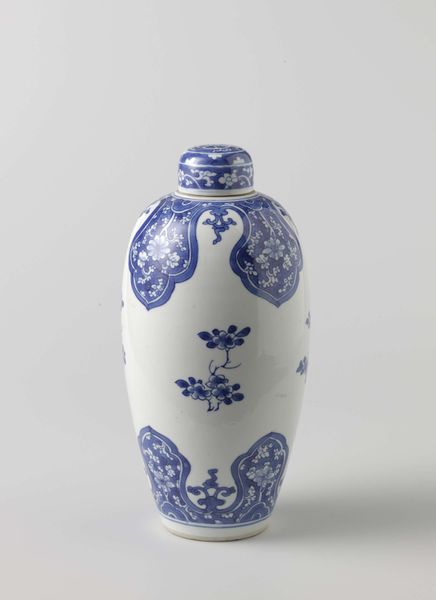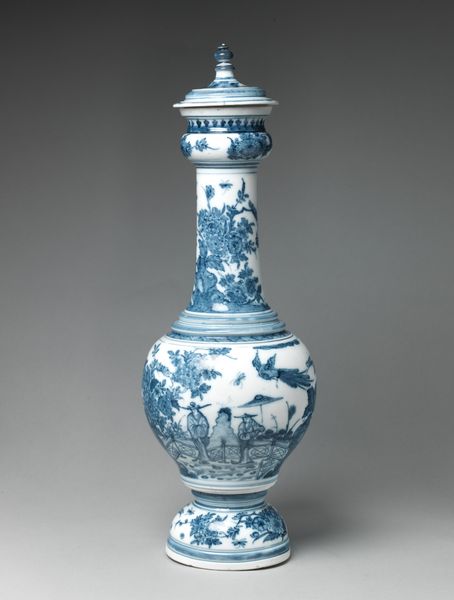
ceramic, porcelain, earthenware
#
asian-art
#
landscape
#
ceramic
#
porcelain
#
figuration
#
earthenware
#
stoneware
#
ceramic
#
genre-painting
Copyright: Rijks Museum: Open Domain
The ‘Garniture with three vases and two beaker vases’ was made by De Drie Posteleyne Astonne, and is made of faience and tin-glaze. Faience, also known as Delftware, is a labor-intensive ceramic imitating Chinese porcelain. These objects were created by molding soft clay, coating it with a tin-based glaze for a bright white surface, and then hand-painting the blue decorations. Notice how the smooth glaze allows the cobalt oxide pigment to flow freely, creating the characteristic Delft blue. The production of Delftware was a complex business. Raw materials were sourced from different locations and combined into a workable clay body. These were made in workshops, in which laborers divided their time between throwing, glazing and decorating. This division of labor allowed for the rapid production of large quantities of wares, reflecting the growing consumer culture. So, when you look at this vase, think about the many hands involved in its making, and the global trade networks that supplied the materials. It’s a reminder that even the most decorative objects are deeply rooted in the realities of labor, politics, and consumption.
Comments
rijksmuseum about 2 years ago
⋮
Garnitures were extremely popular decorative elements in 18th-century Dutch interiors, where they were placed on cabinets or buffets. Although the forms of some garnitures evolved with the times, popular models, like this set with decorations inspired by Chinese porcelain, remained in production for many decades.
Join the conversation
Join millions of artists and users on Artera today and experience the ultimate creative platform.


